Airdrops are not tokens, they are pricing for future beliefs

Reprinted from panewslab
04/16/2025·4DOriginal title: "Tokens aren't just CAC: they are instruments for underwriting user behavior"
Written by: Lauris
Translated by: Daisy, Mars Finance
Tokens are not only customer acquisition costs (CAC): they are underwriting tools for user behavior
Most founders view CAC as an accounting indicator. In the cryptocurrency field, especially applications or protocols that require frequent user interaction, it is closer to structured finance. Tokens are not only incentives; they are underwriting tools.
They embed options into user behavior, shifting growth spending from sunk costs to a combination of contingent claims for future participation. When you issue tokens, you are not "rewarding" users: you are actually writing a behavioral derivative.
Traditional CAC is cash expenses. Token CAC is an exposure with convex returns, endogenous pricing and reflexive momentum. This is not marketing. This is capital formation, abstracting to the user level. Handling this correctly is crucial to create an upward momentum in customer acquisition, retention and mental share.
There is a reason people like @nikitabier are increasingly involved in cryptocurrencies. Cryptocurrencies are one of the last frontiers besides proxy development, with real innovation in growth and distribution engineering.
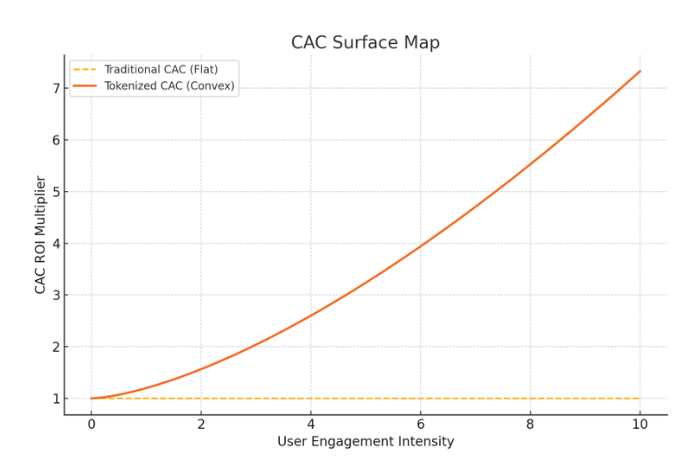
Airdrop mining: premature yield curve
Airdrop mining is often misunderstood. Yes, it is extractive. Yes, it is often manipulated. But under the surface of profit-oriented projects is a deeper truth: users are expressing forward-looking expectations of the value of tokens and price their time accordingly. This is not a reward for behavior. This is an act as an option exercise.
Early airdrops created the original behavioral market. Many of us, myself included, started participating in DeFi based on expectations of future rewards through mining.
Speculators preempt the generosity of agreements by simulating beliefs. The agreement tolerate such leaks, as even noisy activities create liquidity, distribution and narrative frameworks. This attention capture ultimately helps price discovery.
Mining is not a hacker. It is the first market to price attention futures. Ultimately, cryptocurrencies are a place for trading and financial attention.
CAC as a structured exposure
In traditional growth models, CAC is a constant. In cryptocurrency, it is a curve shaped by emissions, attribution, attenuation and gaming mechanics.
You can treat each user as part of the exposure:
- Early adopters = high risk, high leverage.
- Core user = stable cash flow, low volatility.
- Recommender = Distribution Agent with Embedded Network Increments.
Tokens allow you to price these parts dynamically, not only in US dollars, but also in protocol native tools that reversibly appreciate as the network expands. This is not a "paid user". It's writing call options for your future attraction and distributing them to those who created it.
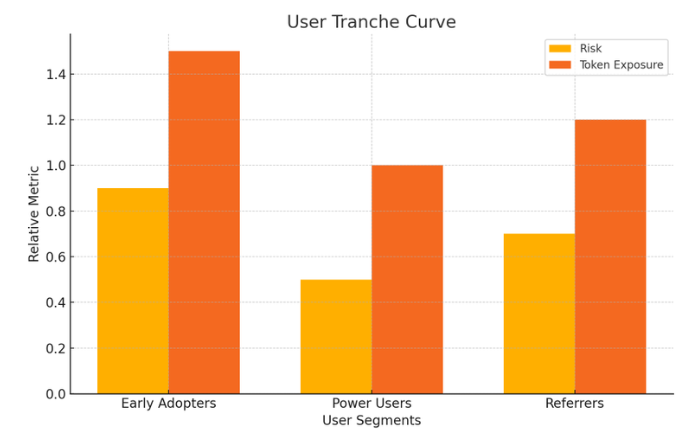
Excitation design: fractal convexity
Well-designed token systems create layered convexity:
- You are rewarded for your early action.
- If others act because of your actions, you will be rewarded again.
- If the system itself repricing increases as a result, you will receive a reward for the third time.
Some of the most interesting systems in cryptocurrencies use these mechanisms to create a natural Schelling point: through the reflexivity of on-chain activity. Just 3;3 brothers.
Everyone knows that the benefits are not linear. It is recursive. This creates fractal convexity, in which each effort creates second-order and third-order exposure to the protocol success.
An effective incentive design encodes it into the system:
- The points system is both a soft warrant and a volatility surface.
- Attribution plan as a synthetic lock.
- The action costs of different hierarchies (in terms of underwriting) to attract different user roles, including investors.
You are not providing certainty. What you provide is exposure to potential. That's why it spreads.
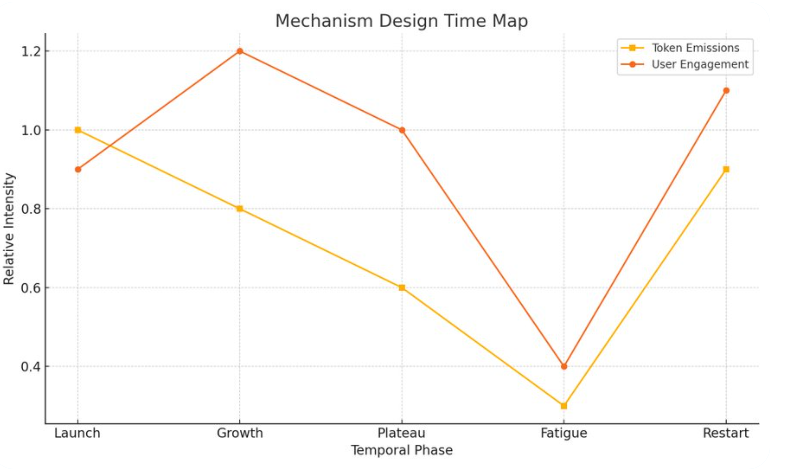
Mechanism design: rhythm, reflexivity, pace
Traditional CACs are static. Tokens allow you to control the rhythm. Time-based unlocking. Seasonal emissions. Expired multiplier. These all shape the behavior density, i.e. the frequency and intensity of user participation.
Well-designed CAC system balance:
- Reflexiveness (users price their behavior),
- Scarcity (earning window closes),
- Narrative (progress can be shared),
- Volatility (the results are uncertain, but non-zero).
In cryptocurrencies, recommendations are not affiliate marketing, but meme underwriting. When a user becomes a CAC agent, it is not coverage, but reflexivity: their ability to attract other people who also want exposure.
This turns virality from a coefficient (k factor) to a financial feedback loop:
Invitation → Points → Influence → Attention → Price Rise → More Invitations.
It adds an apology to distribution. Inspiring actions with social coverage become self-priced narrative speed.
Tokens are rhythmic CACs. Therefore, there is a proverb: "Technology is good when prices rise." If reflexivity continues, the network effects native to cryptocurrencies can last longer than many traditional viral flywheels.
Super fluid
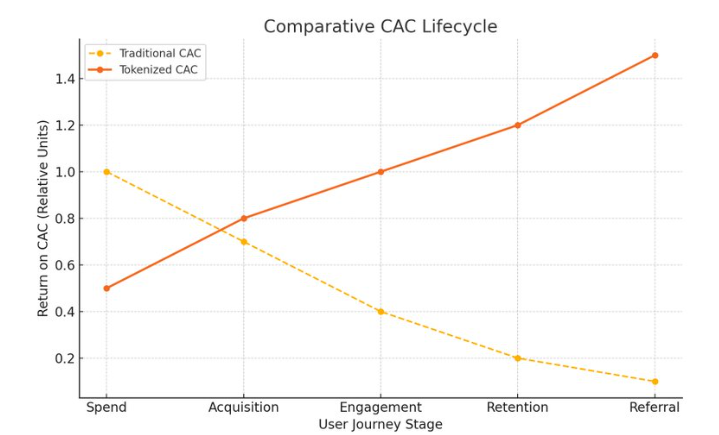
Blur and Blast: Mechanized liquidity extraction
@blur_io Performs CAC as a tool with surgical precision.
Points are not loyalty badges. They are emission futures based on rankings and time-weighted. Every user becomes a micro market maker, competing under the attenuating incentive curve.
Rankings are not just gamification. It's about who can trade the hardest on-chain price discovery under pressure. We can blame Blur for destroying the NFT market, and maybe even the entire NFT finance. Fractal convexity means that all assets, all series, and all actions become closely related.
But the system acts exactly as @PacmanBlur intends: actively monopolize the market.
Deep liquidity. No CAC burning. Perfect information asymmetry. This is not marketing. This is a structured auction for liquidity and attention.
Blast goes one step further – CAC is more than a cost. It becomes a metagame.
The early Blast era was one of the most interesting times in cryptocurrencies for many dApp users. It vigorously underwrites user behavior and explicitly financializes such underwriting. The OTC market is formed around Blast Gold and points. Teams compete for traffic by publishing and capturing attention. Metagames are multi-participants, zero-sum and speculative designs.
There has been a lot of talk about what the Blast team did right and what they did wrong, but it is clear that the Blast system has had a significant impact on the design space of token incentives. The rules are clear, speculation is accepted, and new markets are created around the future value of user behaviors, which are underwritten on a regular and systematic basis.
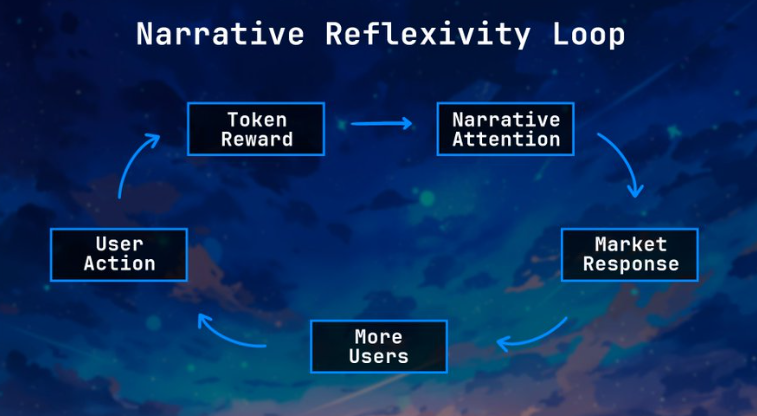
Abstract: Gamified User Behavior Underwriting
Speculative games with incomplete information are inherently convex. Before the mainnet goes online, the rate of speculation will decrease as more clarity is gained. As the system approaches the main network's online event horizon, the gap between hope and reality will narrow. Any Blast core user will deeply understand this in May/June. So, smart teams are looking for inspiration elsewhere.
@AbstractChain’s motivational design isn’t as explicitly financialized as Blast, but the speed of speculative interest is driven by learning some lessons from game design. Most cryptocurrency users are very familiar with the reward systems that exist in the game—achievements, statuses, titles, equipment, etc.
Abstract is positioned as an easy to access universal L2 for consumer cryptocurrency applications. Abstract Portal will naturally clarify the gamification chain interactions, while underwriting user behavior through XP mining, although not so clear. According to my observations, their approach proved sustainable.
Although the future volatility and narrative generation of token prices are less, there are strong user acquisition speeds and real and organic applications. Using badges and unlockable forms of achievement creates a dopamine cycle for users and farmers, creating an intermediate stage between incentive activities and mainnet launches – allowing chain teams and core builders to rush to launch tokens and bring enough users into the chain to maintain an organic product market fit.
Fat Application Theory: CAC Becomes Balance Sheet
Fat protocol theory says infrastructure will capture value. This may still be correct, but the CAC primitive here hints something else:
Application is the balance sheet. These are not just products – they are synthetic economies with their own markets of currency, emissions and beliefs. Blur. friend.tech. Blast. Each designed a CAC system while guiding liquidity, distribution and narrative.
CAC is not a cost. It is a tokenized growth underwriting model. Tokens are synthetic equity.
CAC is now a financial surface
In cryptocurrencies, CAC is not something you lower. It's something you price. You are not spending money to acquire users. You write tools that expose them to the upward space of their behavior.
That's why the best cryptocurrency growth engine feels more like a game, a hedge fund or a cultural movement than a startup. They are systems designed for:
- The game of underwriting attention
- Reflexive financial surface
- Looks like a growth engine for structured products
Although to some extent I still think that getting started is a meme and some of the most successful protocols in the field are relatively closed, I think we are approaching a turning point where by gamification, non-native users will be able to experience the benefits of a protocol or product underwriting their behavior, thus being able to see the benefits of having a financial metagame.
Getting started is a meme because visitors want to build non-speculative cryptocurrency use cases. On the consumer level, cryptocurrencies are pure speculation. Listen to traders, farmers and actual users, not those entering the field to work on mining professionally from the latest Alt L1 financing.
Getting started doesn’t happen by bringing a bunch of random consumers into on-chain applications, but rather when technology, know-how and design solutions for user behavior underwriting become an important part of any consumer application, in this zeitgeist of financial nihilism and uncertainty.

 jinse
jinse

 chaincatcher
chaincatcher